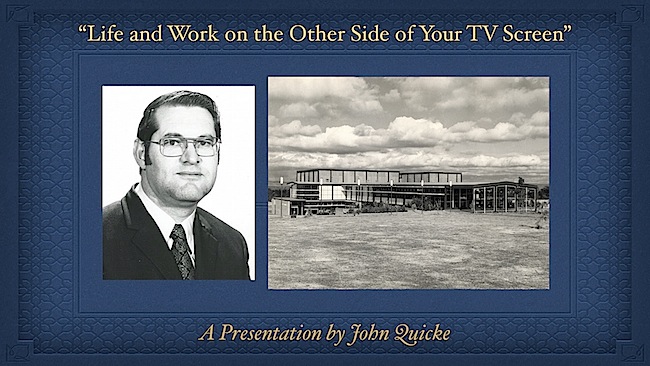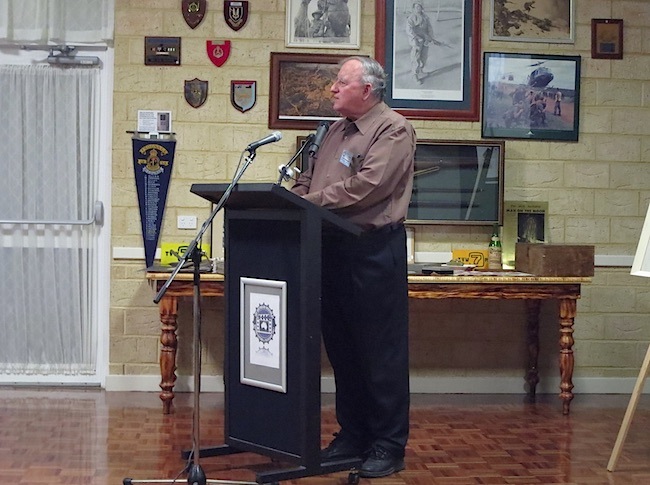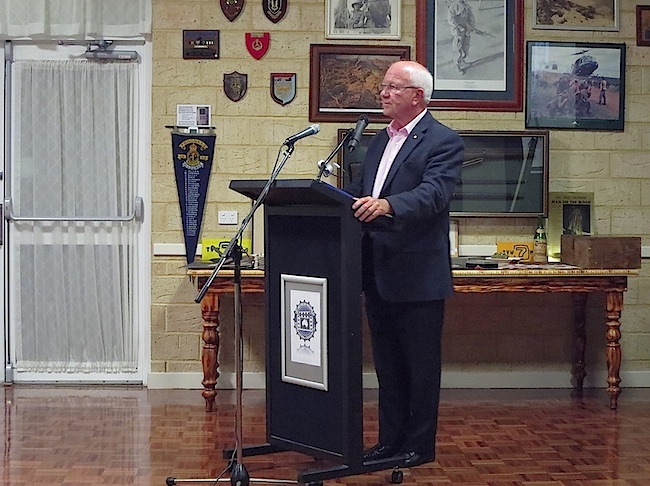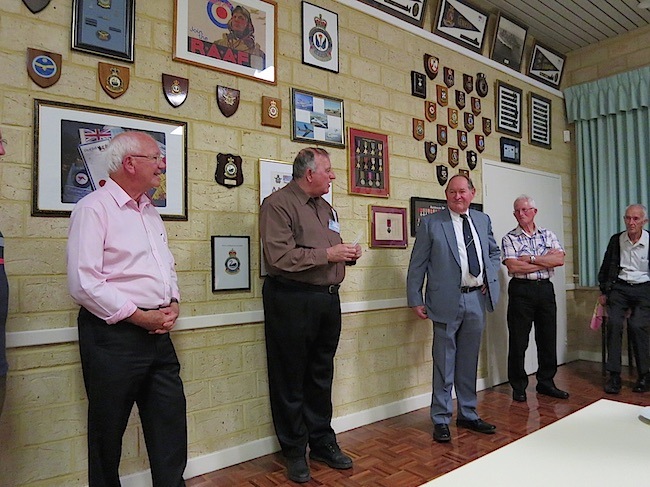Life and Work on the Other Side of Your TV Screen
Engineering TVW7 in the 1960s and 1970s


The Australian Museum of Motion Picture and Television (AMMPT) not only conduct the Sunday morning Classic Movies at the Cygnet Cinema once a month, but also have regular In Focus Presentations, where historians or veterans of cinema or television describe some facet of their respective industries. This month AMMPT was graced with the presence of John Quicke, a former Chief Engineer at TVW Channel 7, who oversaw many important developments during the 1960s and 1970s.
It should be pointed out that the insight and stories that are provided at these gatherings can not be found elsewhere. Little of this information has been recorded, published or even documented, until now.


On the night, AMMPT’s Western Region President John Fuhrmann welcomed all present and then introduced former TVW Enterprises Managing Director Kevin Campbell to set the scene. Kevin then gave an outline of the era and a hint of where the industry will be going in the future, before introducing John Quicke.


It was during John’s watch that many innovations took place at Seven. The design of TVW’s first outside broadcast van for the 1962 Commonwealth and Empire Games at Perry Lakes, the introduction of videotape, the expansion of facilities to include the biggest stage, Studio 1 and a new operational area, newsroom and News studio, the shell for Studio 3, Radio station 6IX’s new studios at Tuart Hill, a tower for OB purposes, an enlarged props area, the first satellite link between WA and the UK, to the initial purchase of colour enabled equipment starting with an RCA TK27 telecine chain and TR70 videotape machine, the upgraded presentation facilities for semi-automation called F.R.E.D. to the building of the Entertainment Centre, and many more key events.


John tracked these happening from when Perth was little more than a large country town and the Dianella area was still bush. For it was this remote area of high elevation land that became the home of television in Western Australia.


It required a pioneering spirit and a desire to learn more for the hard working team who built WA’s first TV station from nothing to broadcasting in only one year from when the licence was granted.


It took a unique group of people to achieved this in an age of valve technology, and when the mains power supply was much less reliable than today. Core equipment was imported, whilst much of the infrastructure was fabricated in the company metal workshop. Located some 15 miles away was the transmitter site, with a tower that remains a hills landmark to this day.
Technical staff were either trained in the military, in the radio and telecommunications industry or were keen Ham amateur operators. They all teamed together, to not only assemble the station, but also operate it from day one.
Progress was rapid as the building and plant expanded to accommodate more production and a greater sophistication of content delivery.
Within a decade or two, the company had absorbed a radio network, a South Australian television station, a chain of hard top and drive-in cinemas, a top photographic laboratory, a large arena style entertainment centre and even a lion park.
Then external forces came to bear, with the middle east conflicts and oil price rises that led into a time of recession, followed by industrial strife, a price and wage spiral and then stagflation.
It was during this difficult period that the Perth Entertainment Centre (PEC) was built, and John was faced with all manner of construction upheaval as concrete pours were halted half way through a job.
Despite all these challenges, the task was done and Perth gained a fondly remembered iconic building, that lasted up until recent times.
Around the same time, TVW Enterprises had gained control of City Theatres and built Cinema City on the corner of Barrack and Hay Streets in Perth, fortunately this development escaped the problems the PEC encountered and came in on budget.
There was insufficient time on the night for John to cover the PEC story in great detail, so this subject will be another AMMPT and John Quicke presentation at a future date.
The story John conveyed on the night, was that of a technical person explaining the challenges and logistics of making this all happen when everyone involved was a pioneer who most often learnt on the job. For the infrastructure they put together allowed television programs it be broadcast in Perth for the first time. Shows that were either purchased as film programs from overseas or shows produced locally. Most local content was live or filmed News stories, until videotape was introduced, which then enabled the exchange of Australian shows between stations in other States.
Engineering TVW7 in the 1960s and 1970s – Part 1 of 4
Former Chief Engineer John Quicke explains not only his origins, but also the origins of Western Australia’s first television station, which opened in 1959. Perth was then very much a backwater, the most isolated city in the world, which was really little more than a big country town. The builders and engineering crews were given only one year to establish the station from scratch. Most of the team had not seen television before, yet they achieved this task and on opening night the presentation was as polished as any other, that had been at it for years.
John tells this story from the viewpoint of a person who was there, and how this all came about.
Engineering TVW7 in the 1960s and 1970s – Part 2 of 4
Former Chief Engineer John Quicke tells his audience about the technology of the time. How television was achieved before the introduction of videotape and where all programming was either on film or live. The equipment was using thermionic valves, that required constant testing, where much of the maintenance involved being a ‘valve jockey’.
John touches on the selection and installation of the equipment, where the station then functioned with only two telecine chains, and one small studio with a couple of cameras.
As primitive as this might seem, some remarkable results were being achieved on-air.


Engineering TVW7 in the 1960s and 1970s – Part 3 of 4
With the 1962 Commonwealth and Empire Games set to happen in Perth, TVW needed outside broadcast facilities in a hurry. They decided to build their own OB Van, rather than buy a custom built one. This saved the fledgling broadcaster a sizeable amount of funds, for they also required videotape facilities, where this format had only been created six years earlier. It really was a pioneering era.


Engineering TVW7 in the 1960s and 1970s – Part 4 of 4
It was a time of rapid change with equipment becoming more sophisticated and plentiful. The building was expanded with new studios, new Newsroom, the purchase of colour telecine and videotape facilities, building a much larger OB Van, the adoption of IBM data processing techniques and the introduction of semi-automation.


The company also began to diversify by buying a radio network and another television station. They also became involved in big arena productions, which led to the building of the Perth Entertainment Centre.
Soon after this, the company was paying dividends to shareholders of up to 30% on their investment.


We wish to thank Seven Perth, John Quicke, Gordon McColl, Mike Humphry, Richard Ashton and the late Frank Evans for the vintage photos related to TVW Channel 7 in Perth, Western Australia.








Wow, what memories. Thanks John, and Ken. What a great time we lived through. I have strong memories of much of that equipment and the troubles we had. As someone said to me, much of that 1960/70s equipment “only just worked”, even when fresh from the factory. Every major new item was accompanied by a factory engineer for a week or more to get it working when installed, and to fix the early faults. What a contrast when we started using Japanese gear. It just worked first time, every time and kept working, fault free.
Videotape was fraught with problems and we only just got some programs to air, or kept them on air. We used to have to do acceptance testing of every reel of videotape bought – what a boring job that was – count the dropouts. I can remember when, if I could recognise the US news videotape pictures, then they passed the technical acceptance test. The “standards conversion” in the 70s was atrocious. To think that we can now record perfect Hi Def colour video onto SD cards at a few dollars each is astounding.
Many of us say, we lived through the golden years of TV, and they’re gone forever. Thanks for preserving as much as you can.
I worked at BTQ7 Eng. during that era: Can’t comment on your interesting-read Blog as I don’t have a URL. Would like to contact someone who commented on your Management blog entry; he was the Asst. Chief Eng. at BTQ7 during that era.. They were wonderful times and very hands-on before computors, automation etc.